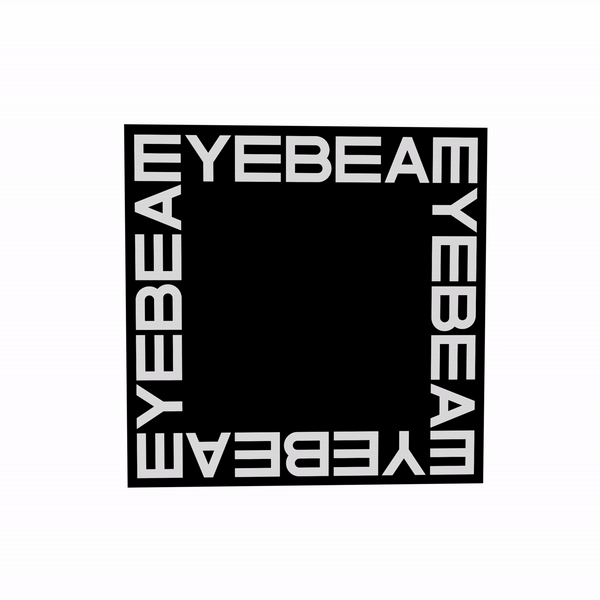Our History
Eyebeam was established in 1998 by John S. Johnson as a resource for artists to engage creatively with technology in an experimental setting. Originally located in a warehouse in the Chelsea neighborhood of Manhattan, Eyebeam supported makers and thinkers who spearheaded game-changing projects like reBlog , the first-ever online “sharing” protocol, and Fundrace , the first geocoding of public campaign finance data.
Many more “firsts” were had at our studios over the years, including the C-based creative coding platform, OpenFrameworks , and the first comprehensive rap lyrics database, the Rap Research Lab by Tahir Hemphill. Eyebeam has committed to amplifying the voices of artists, inventors, designers, and engineers who show us the horizon of what is possible, creating space for them to imagine the future. Society’s ever-shifting relationship to technology can be charted through the work of those that have come through our doors over the past two decades.
Eyebeam continues to be a power station for invention, providing a space for experimentation that propels and uplifts the cultural conversation. Eyebeam has opened its breadth of support to equitably compensate over 125 artists each year through its diverse programming. Now more than ever, Eyebeam radically centers artists in the cultural conversation, giving them the support to both interrogate and re-imagine what technology can be and who it is for.

Eyebeam was established by John S. Johnson as a resource for artists to engage creatively with technology in an experimental setting. Originally located in a large warehouse in the Chelsea neighborhood of Manhattan, Eyebeam supported makers and thinkers who spearheaded game-changing projects like reBlog , the first-ever online “sharing” protocol, and Fundrace , the first geocoding of public campaign finance data.
Many more “firsts” were had at our studios over the years, including the C-based creative coding platform, OpenFrameworks , and the first comprehensive rap lyrics database, the Rap Research Lab by Tahir Hemphill. Since those early days, Eyebeam has maintained its commitment to amplifying the voices of artists, inventors, designers, and engineers who show us the horizon of what is possible, creating space for them to imagine the future. Society’s ever-shifting relationship to technology can be charted through the work of those that have come through our doors over the past two decades.
Eyebeam continues to be a power station for invention, providing space for experimentation that uplifts quality of life and contributes to a better digital world. Eyebeam has opened its breadth of support to equitably compensate, on average, over 125 artists each year through its diverse programming. Now more than ever, Eyebeam radically centers artists in the cultural conversation, giving them the support to both interrogate and re-imagine what technology can be and who it is for, primarily through its direct artist support programs. With a focus on impact, Eyebeam nurtures artists’ ideas and opens their projects for cultural and social resonancethrough exhibitions, presentations, and festivals.
Impact
Over the last two decades, Eyebeam has been regarded for generating visionary work by artists and technologists, in collaboration with community. Through its flagship residency and fellowship programs, Eyebeam has provided direct and robust professional and financial support to over 500 artists.
In the last five years, we welcomed close to 5,000 people for free, in-person public programs ranging from intimate talks with pioneers in art + tech, such as Joan Jonas and Charles Atlas to Disability Artistry Wikipedia Edit-a-thons and engaged multiple thousands online worldwide.
In that time we also launched the singular Eyebeam Center for the Future of Journalism , an experimental grant-making program that supports artists and artist-journalist teams producing innovative and revelatory journalistic work for major media outlets. ECFJ has unlocked new forms of journalistic co-creation in The Nation, The New York Review of Books, The Atlantic, Gizmodo, Wired, Guardianand many more media partners.
In 2020, with questions of safety suddenly at the fore, the organization’s inaugural digital residency was launched with an open callfor radical, visionary projects to be shared publicly. Rapid Response for a Better Digital Future initiative supported 30 artists around the world to create projects that help society “exit surveillance capitalism and imagine what comes next.” Providing direct financial support and professional development through an innovative digital-first strategy, the residency culminated with a three-day online digital festival, “From The Rupture.” The festival welcomed over 3,000 guests in a time of crisis to provide highly creative, imaginative engagement for a global audience.
Today
“There's a window of opportunity for artists to help us think through our relationship with this world that we're entering. And it's important that we do that now.”
Roddy Schrock, Eyebeam
A new chapter begins in 2021, with the shedding of Eyebeam’s beloved physical residency space and the de-centering of its authority. A transformed and responsive Eyebeam now operates in a globally distributed format that emphasizes network, community building, and social justice. Over a three-year period, a total of 75 artists will receive $1.5 million as part of The Democracy Machine, a radical, ambitious cycle of trans-disciplinary art and activism guided by an initial cohort of Black, disabled, and Indigenous artists. The cycle is complemented by a new coalition of organizations invested in privacy and technology, artificial intelligence, inherent bias, journalism, emerging digital media, and arts and activism.
Eyebeam continues to embed artists and writing into society so that they may help invent and design a shared future and explore issues like race, gender, and aging: notably, the Eyebeam Center for the Future of Journalism has facilitated investigative, high-profile commissions by artists and in 2021 received its first Pulitzer Prize.